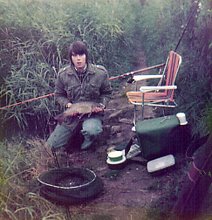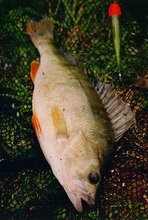 |
| Spooning on the Marmalade... |
It is possible to subdue your Herman. On the sheet of instructions which accompanies the initial gift of batter you are told not to keep the culture in the fridge, but this is rubbish. Naturally if it is left in the fridge without ever feeding, it will turn into a black mess, but by feeding and stirring it on a weekly basis, the maintenance of it can be reduced.
The basic recipe gives a solid, chewy and tasty foundation upon which to build and the usual addition of fruit lightens the bite and compliments the yeasty undercurrent very well. However, I wanted to try something a little different for a Sunday afternoon treat with some friends and family. So I took the basic recipe and just added a half a jar of homemade marmalade, some orange zest and some orange juice. This is the basic recipe:
The measurements are given in cups - a volume measurement - rather than by weight. If the resultant mix is not viscous enough - too stodgy - then add a drop more batter, milk or fruit juice to water it down a little:
- 2 Cups Herman Batter
- 2 Cups Plain Flour
- 1 Cup Sugar
- 1/2 Tsp Salt
- 2/3 cup melted butter or light oil (about 150 mls)
- 1/4 cup milk
- 2 eggs
- 2 tsp vanilla extract
- 2 heaped tsp baking powder
That's the basic recipe to which MUST be added the additional flavours to make a fruit cake, lemon drizzle or even carrot cakes, as examples.
I stirred stirred into my basic recipe a half a jar of home-made Seville Orange Marmalade together with the juice and zest of an orange. I baked mine at 150 for an hour and 15 minutes or so, or until cooked in the middle.
The resultant cake was still heavy, but also tangy and chewy and would have been excellent with warm custard. It disappeared quickly enough without it though, so it was a success.
I shall try a few more recipes but I also want to find a way to make the cake lighter without removing the yeasty flavour and the wonderful texture of this style of loaf cake.



.JPG)






